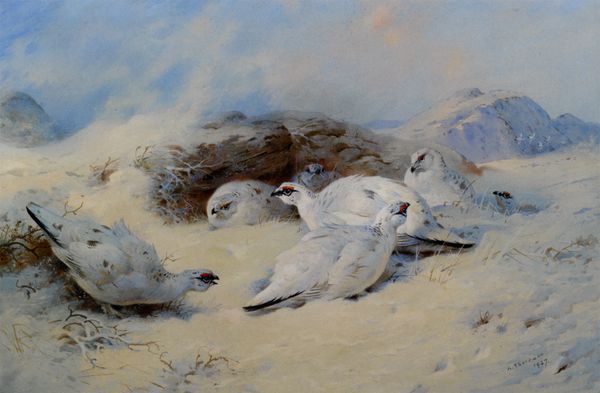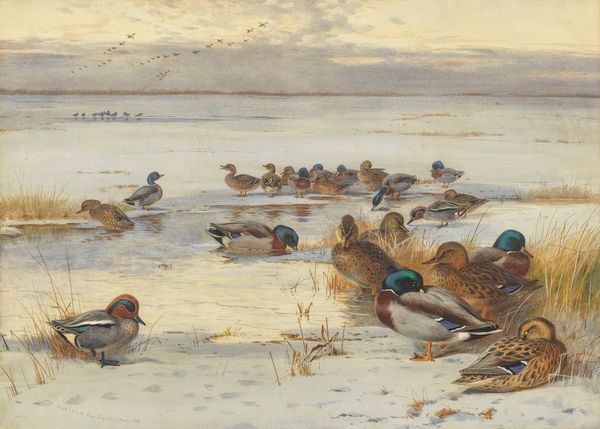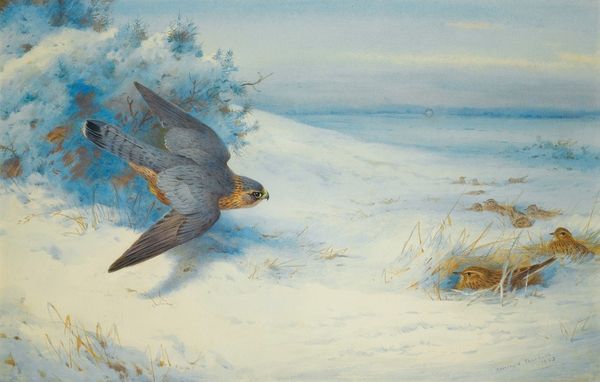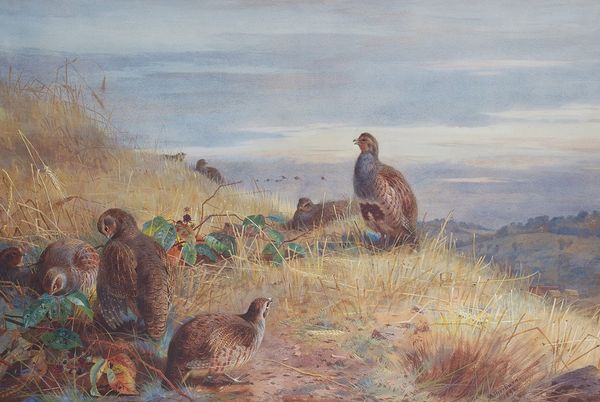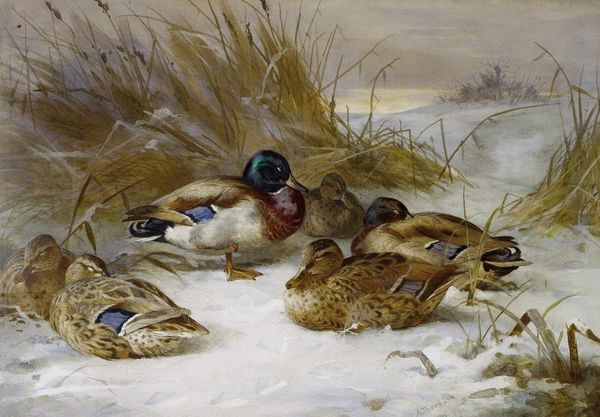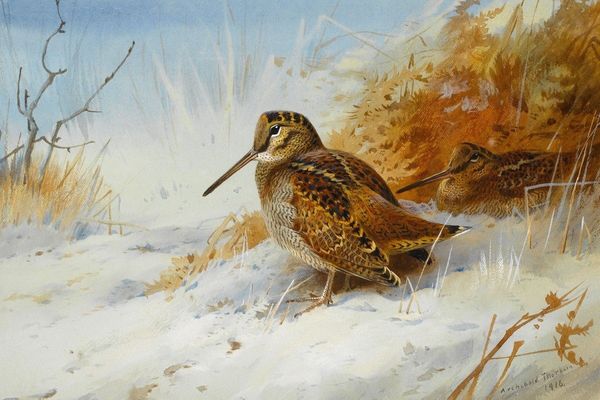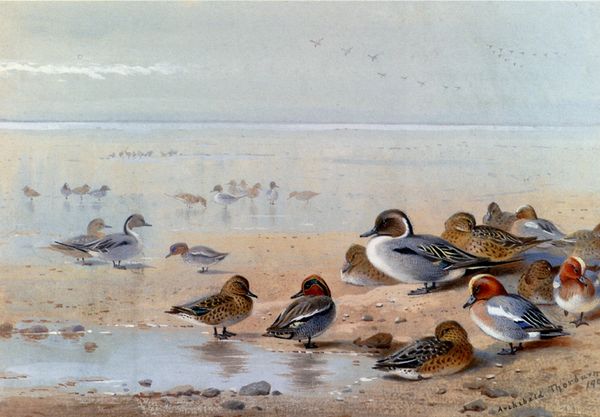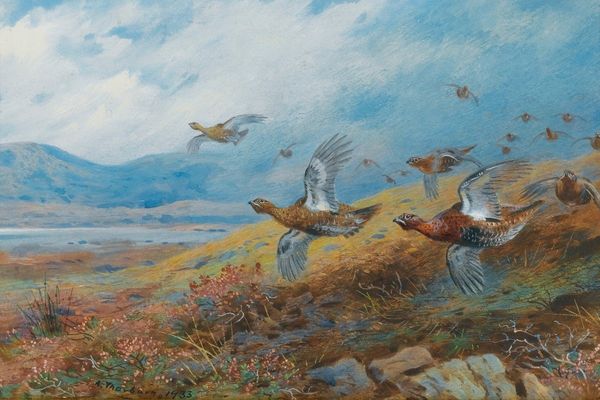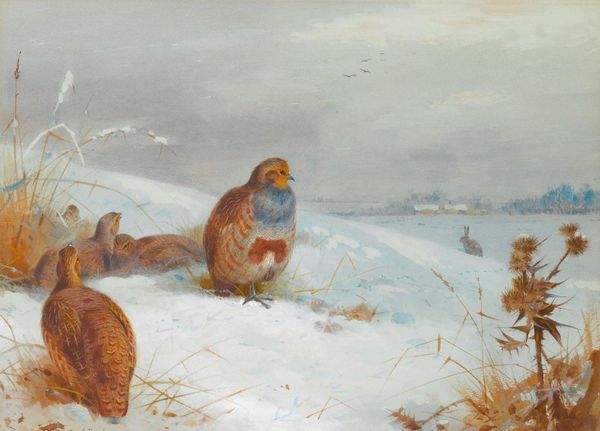
painting, watercolor
#
animal
#
painting
#
landscape
#
oil painting
#
watercolor
#
watercolor
#
realism
Copyright: Public Domain: Artvee
Curator: Here we have Archibald Thorburn's watercolor, "Ptarmigan in Winter Plumage," signed and dated 1899. My immediate reaction is how still the whole scene feels, almost frozen. The pale palette creates such a tranquil effect. Editor: The overwhelming whiteness definitely speaks to the brutal conditions under which many species struggle to survive. We should consider the socio-economic factors impacting our planet's ecosystems as we observe this seemingly peaceful moment. How can the supposed peace within this image contribute to broader conversations on climate justice? Curator: An interesting perspective. But let's first consider Thorburn's technique. Look at the detail in the birds' plumage, the delicate blending of greys and browns that creates such lifelike texture against the backdrop of snow and rock. Semiotically, the shades work to blur the lines between species and natural habitats. Editor: It's visually impressive, yet these landscapes were far from neutral territories in the late 19th century. Thorburn, who found acclaim during the height of British colonialism, depicts wildlife. But how might the painting’s seemingly neutral observation align with broader oppressive attitudes towards non-Western societies? Who got to define the 'natural' at that time, and whose interests did it serve? Curator: Are you suggesting that Thorburn was conscious of a sociopolitical narrative while creating a simple landscape featuring birds? This could reflect an effort towards preserving an idea of "nature" that was at risk of disruption by industrial expansion at the turn of the century. Editor: It is about making connections. If one appreciates his exquisite technique, shouldn't that appreciation also create engagement with discussions on environmental preservation and justice for marginalized groups affected by the same forces that once defined empires? Can appreciation be a path towards social consciousness? Curator: It seems we’ve reached another point of divergence on interpretation here. For me, the essence lies in appreciating the intrinsic artistry and craftsmanship within the piece, as well as opening doors into ecological discourse. Editor: And for me, art remains a vital force when we interpret works through the layered complexities of intersecting dialogues that help inspire critical thinking about our world.
Comments
No comments
Be the first to comment and join the conversation on the ultimate creative platform.

